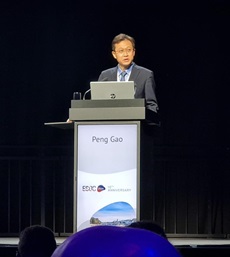
According to a seven-year study conducted in China, intracranial stenting alongside medical therapy does not provide additional benefits compared to medical therapy alone for patients with severe intracranial atherosclerotic stenosis. These findings were presented by Peng Gao (Capital Medical University, Beijing, China) at the 2024 European Stroke Organisation Conference (ESOC; 15–17 May, Basel, Switzerland). Gao emphasized the importance of medical therapy as the primary strategy for long-term stroke prevention in this patient population.
Previous trials like SAMMPRIS and VISSIT, along with initial results from the CASSISS trial published in 2022, had already suggested that adding percutaneous transluminal angioplasty and stenting (PTAS) to medical therapy did not improve outcomes in these patients. However, the impact of PTAS over a longer period was not well understood. The current study sought to address this gap by examining the outcomes of stenting versus medical therapy in patients with severe intracranial atherosclerotic stenosis over a seven-year follow-up.
The CASSISS trial was a randomized controlled trial conducted at eight centers in China. Patients with a transient ischaemic attack or ischaemic stroke attributed to severe intracranial atherosclerotic stenosis were randomly assigned to receive PTAS with the Wingspan stent in addition to medical therapy or medical therapy alone.
The primary outcome of the trial included stroke and death within 30 days of enrollment or stroke beyond 30 days in the qualifying artery territory. The study enrolled 380 patients, with 237 patients completing the seven-year follow-up. Analysis showed no significant difference between the PTAS group and the medical therapy group in terms of the primary endpoint over the seven-year period.
Secondary outcomes such as ipsilateral ischemic stroke, disabling stroke or death, and overall mortality also did not show any substantial variation between the two groups. While there was a trend towards a lower risk of stroke specifically in the territory of the qualifying artery after 30 days in the PTAS group compared to the medical therapy group, this difference was not statistically significant.
The study has some limitations, including its focus on Han Chinese patients, which may limit generalizability to other populations. Additionally, the trial did not investigate angioplasty alone or other devices like drug-coated balloons, which are sometimes used off-label for this condition. The authors noted that the landscape of stroke management has evolved since the study was conducted in line with 2014 guidelines, indicating a need for further research to identify potential subgroups of patients who may benefit from stenting.






